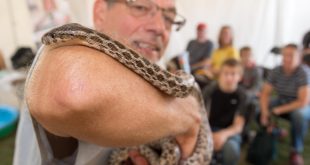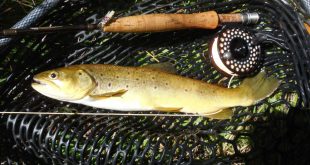Unfortunately, it’s the time of year when many hunters start hanging up their gear for the season.
Maybe they have already harvested game or are tired of trying to do so. Perhaps they are just not interested in being afield during bitterly cold weather, gale force winds and deep snow.
Whatever the case may be, that hunting gear should not be put away!
It’s time to bundle up and take advantage of little to no hunting pressure, colder weather, a completed crop harvest, concentrated and more predictable game, and more receptive landowners to hunting access.
Hunters should not let the word ‘late’ in the late season make them feel pressured or lure them into predicting how their season or seasons might end. Truth is, late season hunting offers plenty of potential and challenges.
Whatever their quarry, late season hunters must rethink strategy and tactics. And, it means paying special attention to details.
Here are some tips to improve your odds for late season hunting success.
LATE CROP HARVEST. It’s been one of those falls in Nebraska where the soybean and corn harvest has been way off schedule. For many opening weekend hunters, standing corn presented major problems. Why? Game birds and animals seek refuge in the oceans of corn and are not disturbed. Standing cornfields are also sanctuaries that double as food sources. However, with the crop harvest essentially completed, a good carryover of game in adjacent or nearby cover is now more available to hunters. Many wildlife species are on strict daily schedules which have them moving from cover to exposed food and vice-versa almost like clockwork. Turkeys are a prime example of following this habitual, daily routine.
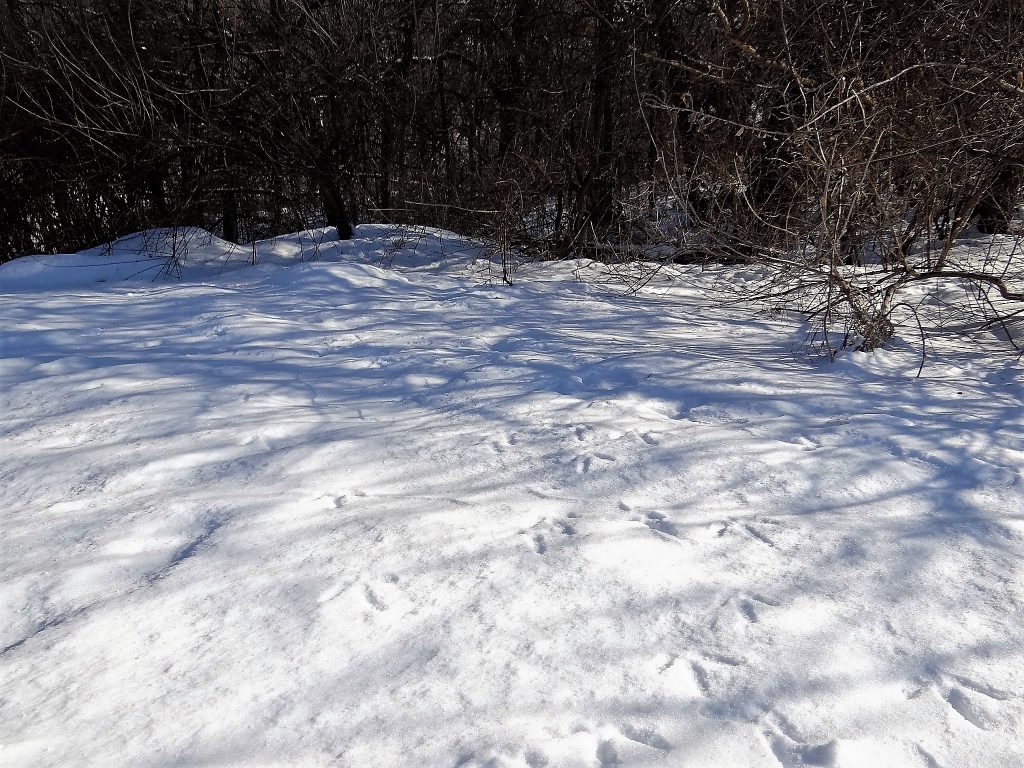
FIND THE FOOD. If you find the food source being used, you’ll likely find the game you are pursuing. This time of year, deer, turkeys, pheasants, quail, grouse, rabbits and squirrels all need to eat lots of high-quality, high-energy foods to maintain adequate body heat for warmth. These are high carbohydrate, high-protein foods. Corn, and especially harvested corn fields that have not been disked are key places to locate game with heavy cover not far away. Other cereal grain crops in fields such as soybeans, winter wheat, rye, oats and sorghum (milo) should not be overlooked as well. Interestingly, studies claim over 60 percent of a white-tailed deer’s yearly diet comes from agricultural crops. Young woody growth in forests (e.g. dogwood), by the way, is eaten by deer during the harshness of winter. For squirrels, black walnuts are favored. In areas without agriculture, it is important to focus on south facing slopes that have vegetation containing weed seeds, rose hips, etc. exposed. These slopes are warmed by much of the sun’s rays and allow for comfortable conditions for game to feed. Additionally, wildlife food plots containing plants that stay green and upright in winter such as forage rape, turnips and radishes (brassicas) are magnets for deer in the late season. When it comes right down to it, late season hunting is all about food, with suitable dense habitat nearby.
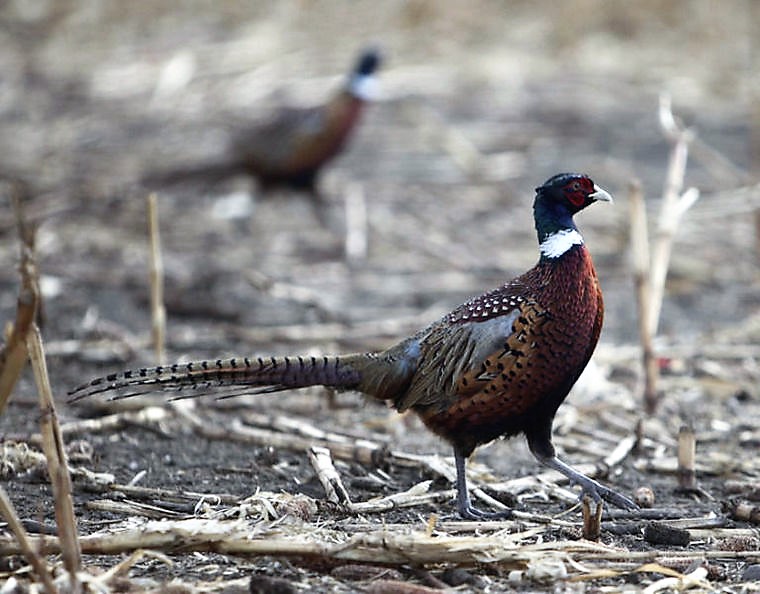
WATER. Water sources in winter are not on the radar of some hunters, and that’s too bad. Think about it. Winter air is dry and water will freeze with extremely cold temperatures unless it is moving. Research indicates that many deer, most notably bucks, bed close to open water during cold weather. Still other research shows that mature deer and deer in-general often go to open water before obtaining food, especially in the winter when they cannot get moisture from plants. Late season pheasants hang out near water sources, too. This translates to the heavier cover of slough edges, cattail marshes, creek bottoms, river banks, etc. There is some question as to whether pheasants need to drink water or not, but the abundant cover is good enough reason to study public land maps for waterways, ditches, wetlands, lakes and ponds.
MILD CONDITIONS. A late season warming trend can actually heat up the activity of game birds and animals. And why wouldn’t it? The mild conditions are comfortable for wildlife species. They can replenish depleted energy reserves, and do so while making their way out of crowded pockets of thermal protection. During a warm weather spell game species are apt to move more, feed more and even expand their range more, which can make things interesting for late season hunters.
FRONTS. Weather fronts, and particularly weather-makers, seem to greatly affect wildlife movement in the latter portions of various Nebraska’s hunting seasons. Deer, for instance, will feed heavily a day or two prior to the arrival of a cold front, and then for a couple days after one. The best times to hunt in the late season are typically right before or just after a significant cold front, or, after a precipitation event (e.g. snowfall). During the fall through spring period, surveys show that virtually all wildlife will show increased levels of activity as a weather front approaches.
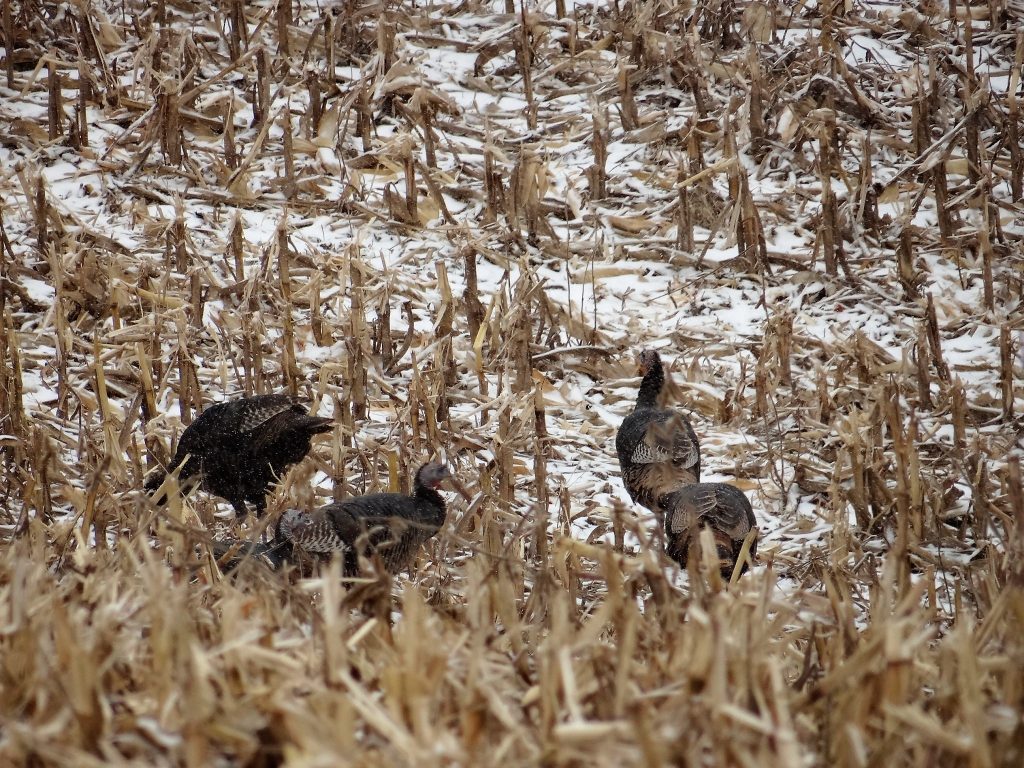
SNOW COVER. Snow cover brings many advantages to the late season hunter. For example, pheasant hunting is generally good after the first snowfall of the season which can bring birds out in the open in harvested soybean fields or pastures as well as group them up in heavy cover like tall warm-season grasses, cedar groves, cattail patches and plum thickets. From a broad perspective, snow cover blanketing the landscape allows the hunter to see game much easier and at a greater distance. Often, pheasants can be seen hundreds of yards away as they pick and feed along the edge of an agricultural field next to heavy cover during daylight hours. The most obvious advantage of snow cover is that anything moving in it must leave tracks or droppings. Sign is far simpler to see, follow, and interpret when made in the snow. Also, the timing of the snow tells you how recently game animals or birds came through an area. Strategically placed game cameras can be of further value to pattern deer and turkeys in the snow.
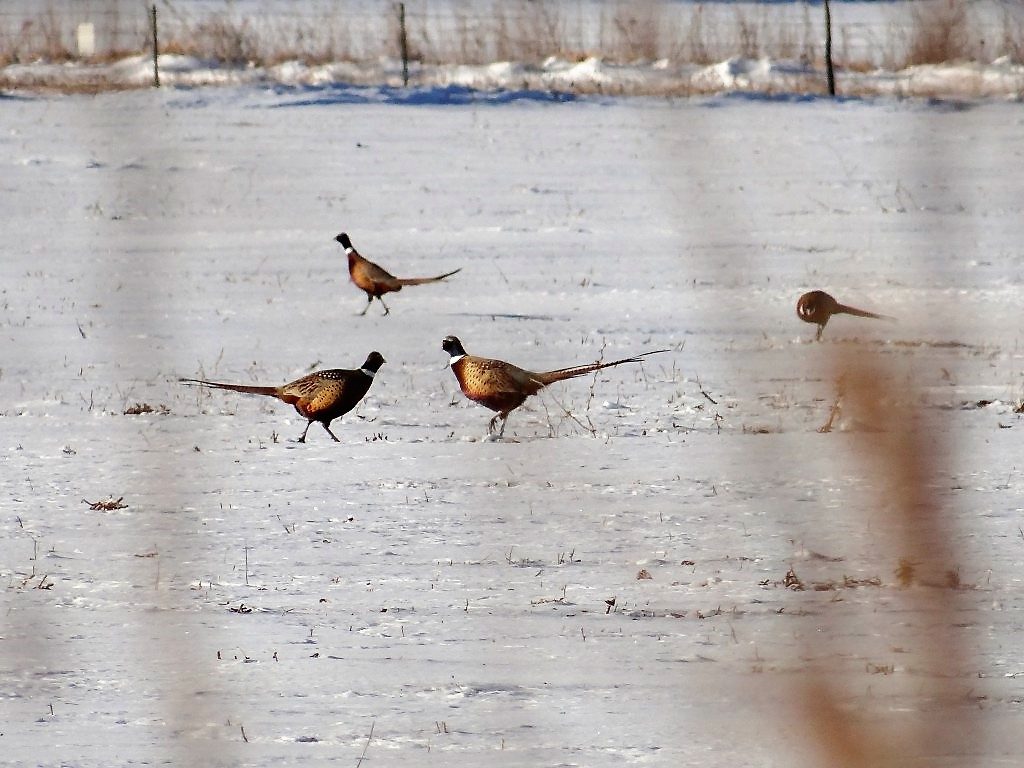
HIGH WINDS. High winds certainly make wildlife more apprehensive and warier. Wind limits an animal’s ability to detect predators, but perhaps more important, fighting heavy winds increases the animal’s stress and caloric output when they are foraging and traveling. Therefore, in periods of high wind, animals change their pattern of movement to minimize their exposure to the elements and predators. So, with higher wind velocities in the winter, hunters need to find places where game can get out of the howling winds such as a ditch, gully, ravine, sheltered creek bottom or the lowest side of a hill. These terrain features let game feel safer and more secure. Many bobwhite quail coveys can be found in these locations if they are brushy and bramble-filled. South-facing, sunny slopes protected from prevailing winds are utilized frequently by game species if they contain both good food and cover. Be sure to check and recheck wind direction when you are in the field and remember that it is usually favorable to face into the wind or have a stout crosswind blowing your scent and sound into a “dead area” where you do not anticipate seeing any game. Also note that much game tends to move when sustained high winds die down. Some wildlife though such as deer prefer low to moderate winds for scenting ability.
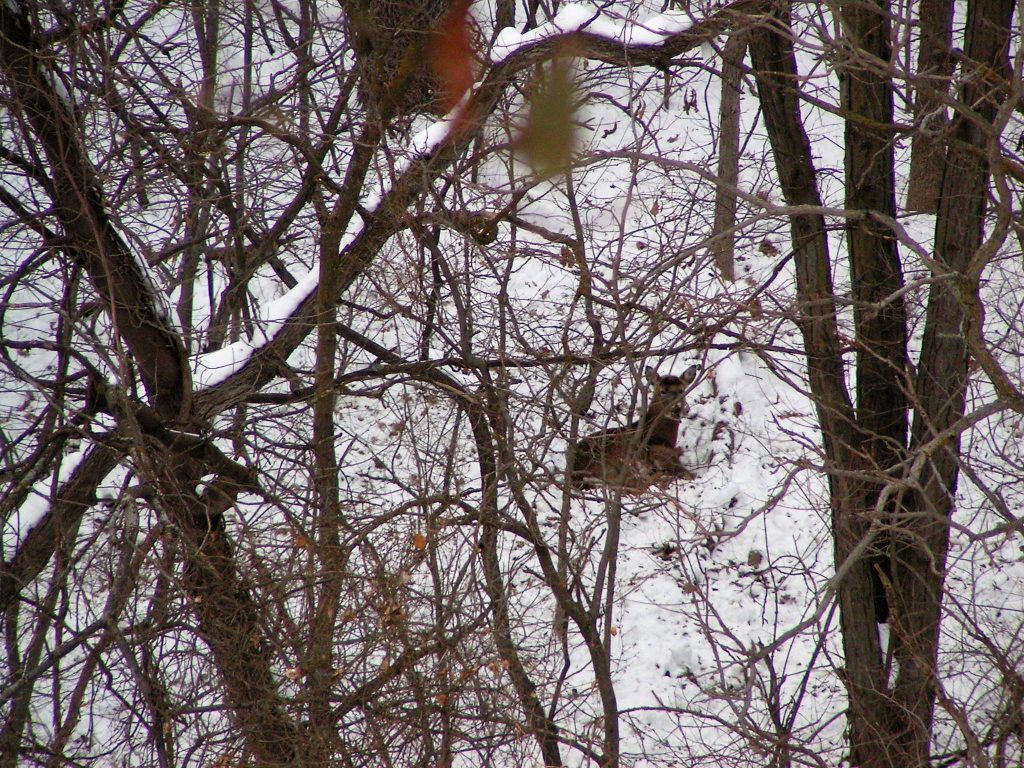
MID TO LATE AFTERNOONS. The early morning hours around sunrise can be downright frigid. Game birds and animals realize that they can conserve energy by waiting to move to feeding areas until the warmth of the afternoon. Hunt those mid to late afternoon hours until the end of legal shooting time. However, watch your weather forecast. If you notice a quick rise in temperatures (10 to 15 degrees or more in 24 hours) hunt the mid to late afternoon hours before the increase. There is a good chance a front is passing through the area.
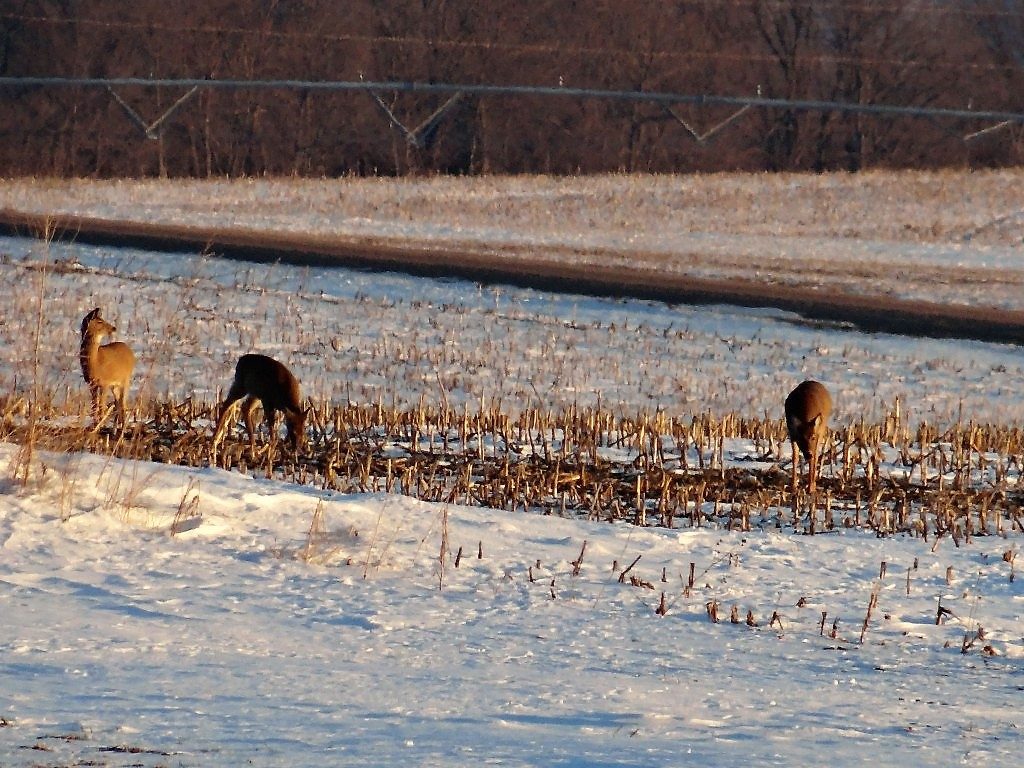
BEING QUIET. It’s impossible to be completely silent on cold, crisp winter days but sound must be kept to a minimum. That means whispering and giving necessary commands to hunting dogs with hand signals. That also means no slamming vehicle doors and easing the shells or cartridges in your firearm. That means no yelling across fields. That means parking a considerable distance from your prime hunting grounds. On public land, whether it is bushytails, cottontails or whitetails, don’t hunt it like everybody else has. Pressured game animals and birds pattern hunters! These that have survived the opening weeks of the seasons. Approach part of a wildlife management area you to want hunt from an opposite direction or less used, more remote) the parking lot, even if that means a much longer walk. The means walking slowly and as silently as you can and avoiding crusty snow cover or vegetation, and using fresh snow or low cover or crop stubble.
PUBLIC LANDS. Successful hunting on public land in the late season is possible for any hunter who is willing to put in the necessary time and effort. Examine maps. Look for food and water sources, natural funnels, game trails and thicker habitats. Go the extra distance to move as far away as possible from access points and parking lots. Usually the further you head into a public area, the less likely you are to encounter other hunters and the more likely you are to encounter game. Hunt the off times, too. If your schedule allows or you have vacation time to burn, hunt on weekdays. Hunting pressure on public lands is considerably less during the week.
CLOTHING GUIDELINES AND HEATER. The key to keeping warm in winter is layering — specifically, clothing that can be added or subtracted depending on weather conditions. Perspiration is the enemy. High-quality wool garments should be considered in the layering approach. Keep the head warm by wearing a neck gaiter, a windproof stocking cap with a face mask, and a hood if the wind chill is below zero. To keep the hands and feet warm during cold-weather hunts, use chemical or electrical warmers. A seat pad, either foam or gel-style, is also a good idea for late season deer and turkey hunting as it maintains a dry barrier between you and a cold, wet seat. Small, portable propane heaters in ground blinds and elevated box blinds with proper ventilation also work well for overall body warmth!
It’s very easy to simply settle into a warm couch and watch hunting shows on TV right now. The weather is rough and hunting can be tough. But there is still much game available. Is it easy? No. But that’s hunting. In a few months, you’ll be suffering from a severe case of cabin fever and counting down the days until spring wild turkey hunting season. Get out and take advantage of what’s left for late season hunting action.
Just remember what the late, great Yogi Berra of Major League Baseball once said: “It ain’t over ’til it’s over.”
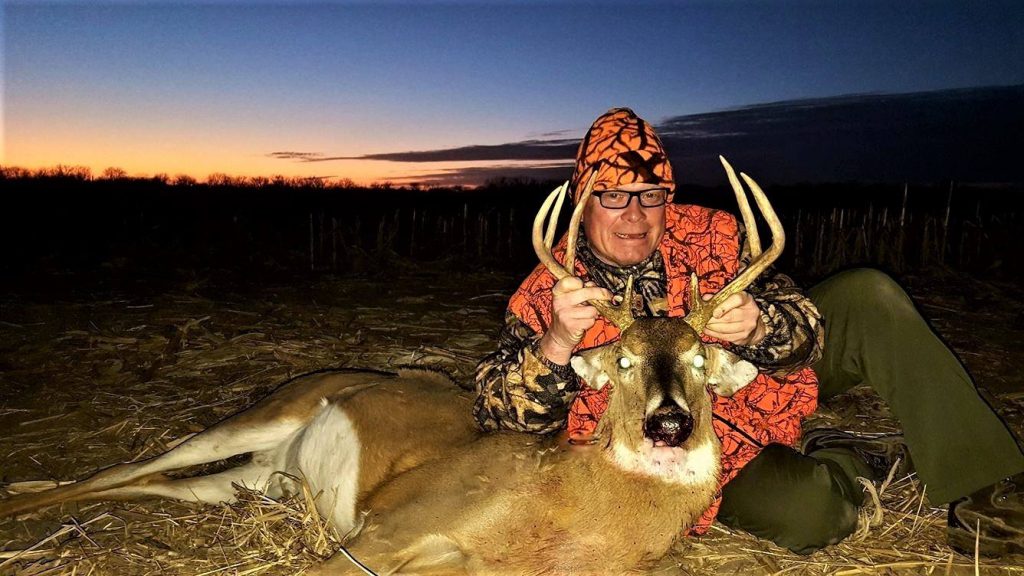
 Nebraskaland Magazine
Nebraskaland Magazine

